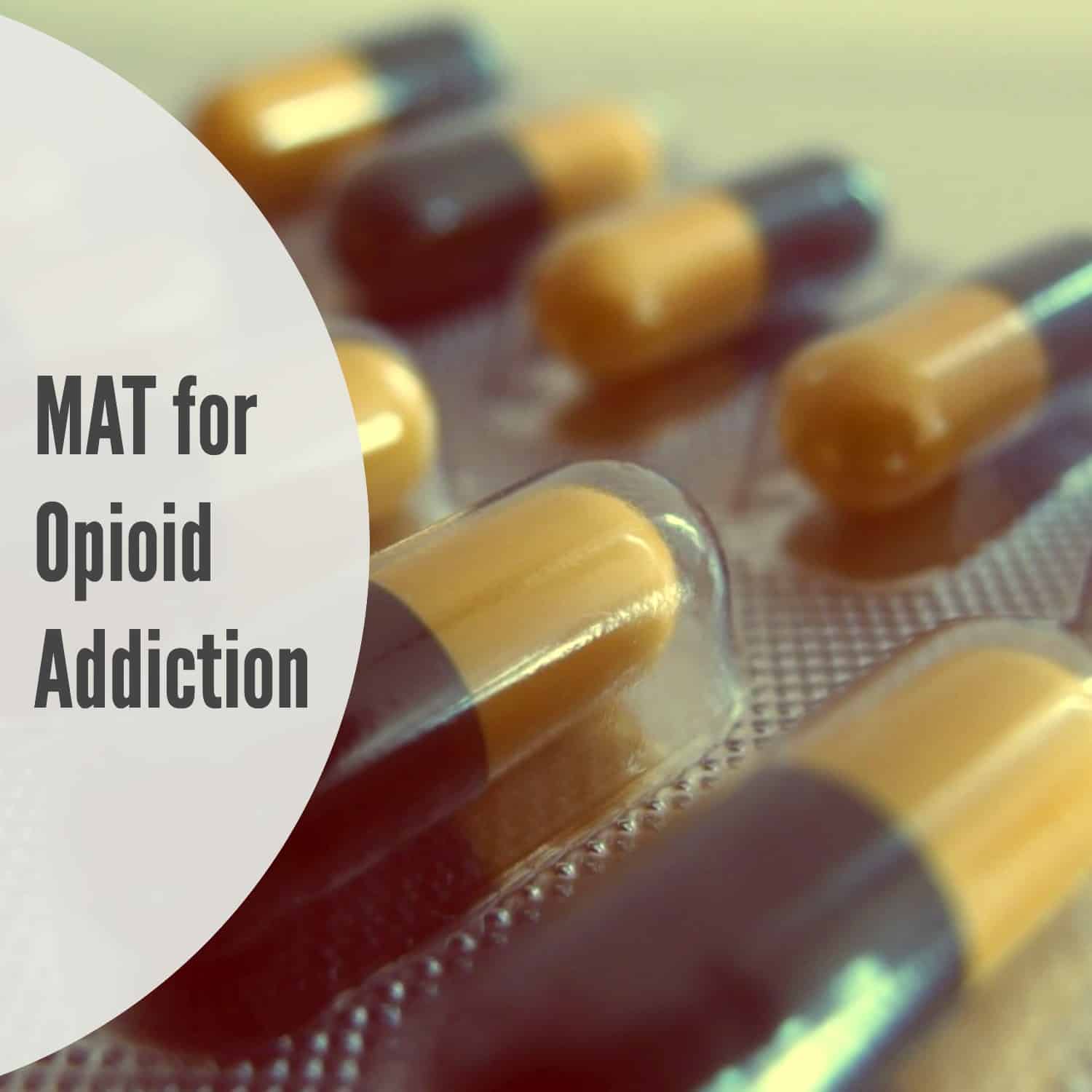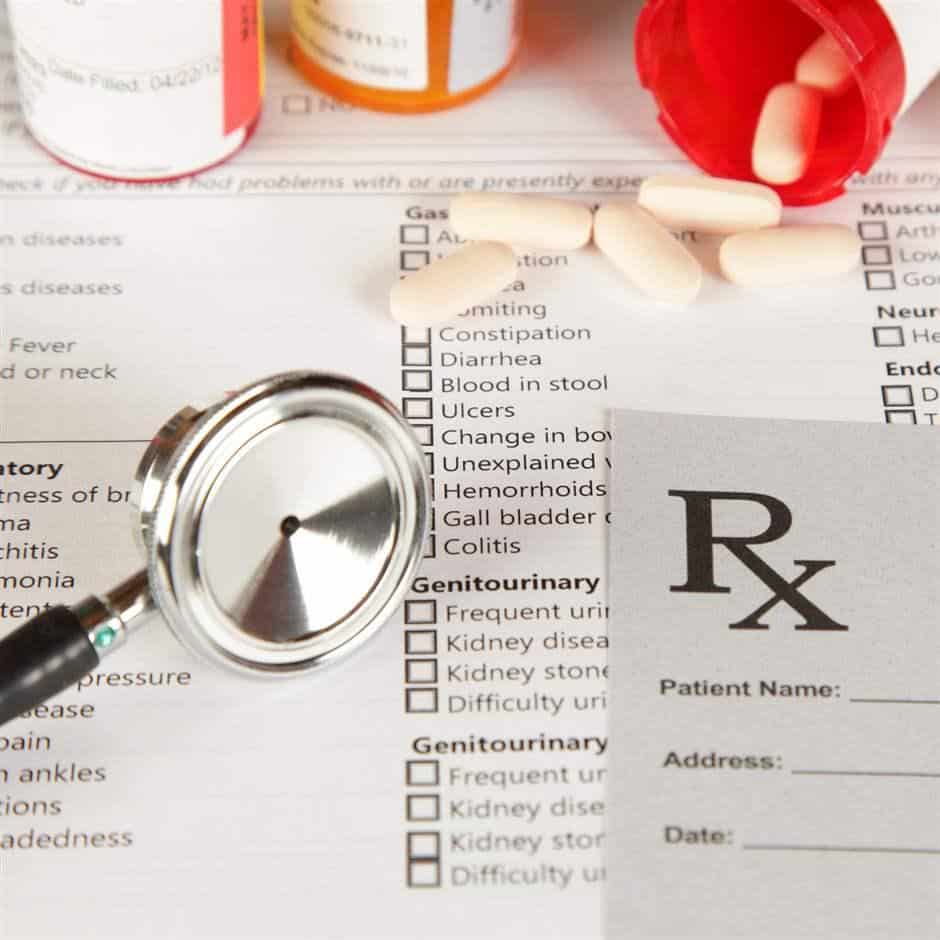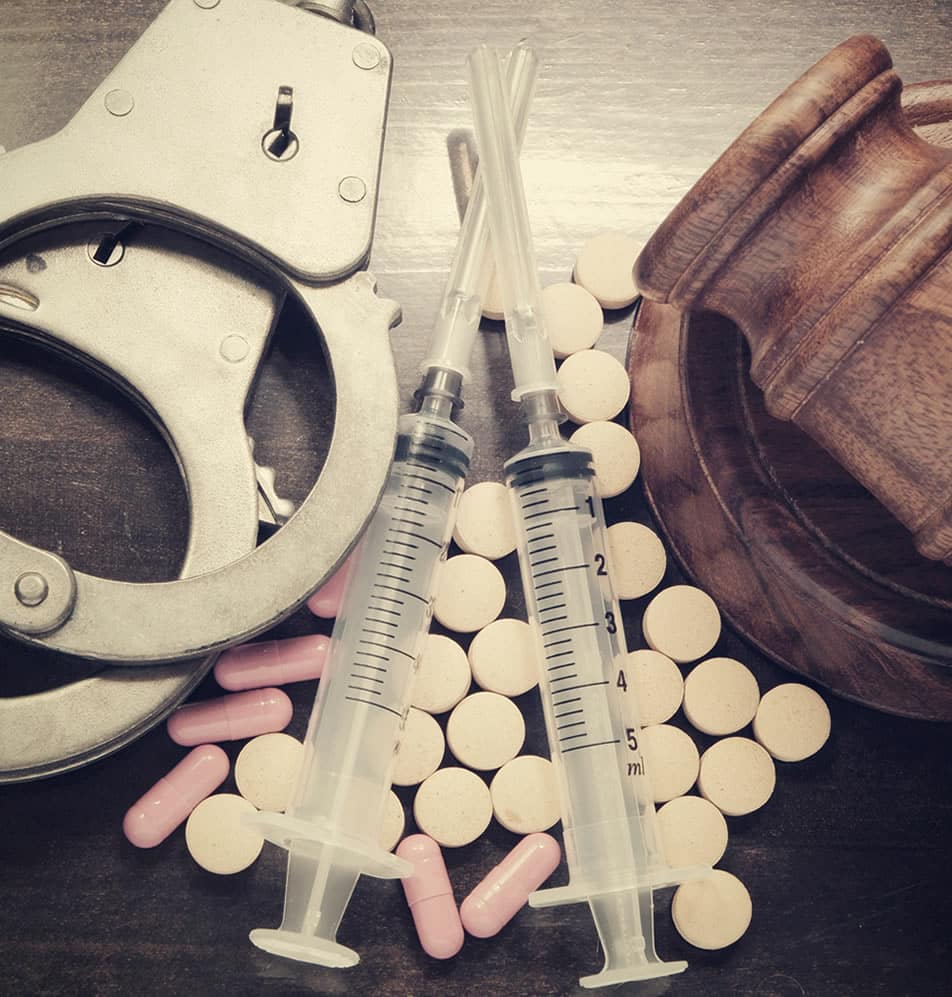How To Find Quality Treatment
Denver Health is state licensed and joint commissions accredited in the treatment of substance abuse and behavioral health. The Substance Abuse and Mental Health Services Administration encourages patients to choose a treatment location that is effective in treatment and recovery from substance use disorders based on these five signs of quality treatment, which Denver Health meets or exceeds:
Opioid Addiction: Medication Assisted Treatment
Medication assisted treatment with professional medical help is considered the gold standard. It uses medication to transition the patient and help with withdrawal symptoms. MAT may also integrate behavioral health.
Using medication to assist in the treatment of opioid addiction is common and preferred. It can improve a persons health and positively influence his or her participation in a rehabilitation program.1
There are 3 medications commonly used in MAT to transition patients off prescription opioids or more illicit substances like heroin and fentanyl.
How Are Opiate Withdrawal And Addiction Dealt With In Highland
At Liberation Way, medications are utilized to relieve withdrawal symptoms, if scientifically suggested. Our medical experts will deal with you to make withdrawal and detox as comfortable as possible.
As soon as your medical condition is stabilized, your clinical team will recommend the very best right path for you. We supply three rehab courses for opioid use disorder:
Lots of treatment centers use Methadone for opioid use disorder. Discover why Liberation Way utilizes Suboxone rather than Methadone for opioid use disorder.
Read Also: What Does An Addict Look Like
Safe For Pregnant Women
MAT is also particularly beneficial to pregnant or nursing women who suffer from an opioid addiction. Methadone in particular is commonly prescribed to pregnant women being treated for opioid addiction.
Withdrawing from opioids can be an incredibly painful process that often involves fever and extreme nausea. Muscle contractions are common during the withdrawal process as well, which can be dangerous or deadly to an unborn child. For this reason, a treatment course that lessens these effects can ultimately be the safest. Methadone has shown to be a safe option for pregnant or breastfeeding women.
Little research has been conducted on buprenorphines effect on pregnant or nursing women. As such, its less commonly prescribed to these patients than methadone. The National Institute of Alcohol Abuse and Alcoholism also advised that patients who are pregnant not use naltrexone.
Effective Medications Are Available

Medications, including buprenorphine , methadone, and extended release naltrexone , are effective for the treatment of opioid use disorders.
- Buprenorphine and methadone are essential medicines according to the World Health Organization.3
- A NIDA study shows that once treatment is initiated, a buprenorphine/naloxone combination and an extended release naltrexone formulation are similarly effective in treating opioid use disorder. However, because naltrexone requires full detoxification, initiating treatment among active users was more difficult with this medication. Once detoxification was complete, both medications had a similar effectiveness.
- Medications should be combined with behavioral counseling for a whole patient approach, known as Medication Assisted Treatment .
MAT opioid use, opioid-related overdose deaths, criminal activity, and infectious disease transmission.4,5,6 After buprenorphine became available in Baltimore, heroin overdose deaths decreased by 37 percent during the study period, which ended in 2009.6
MAT Increases social functioning and retention in treatment.4,5 Patients treated with medication were more likely to remain in therapy compared to patients receiving treatment that did not include medication.4
Treatment of opioid-dependent pregnant women with methadone or buprenorphine Improves Outcomes for their babies MAT reduces symptoms of neonatal abstinence syndrome and length of hospital stay.7
Recommended Reading: What Happens To Drug Addicts In Jail
The Possible Drawbacks Of Medication
Though medication-assisted treatment is preferred by many addiction medicine specialists, there are some drawbacks to consider.
- MAT requires close medical supervision at a certified facility
- The powerful medications used may have undesirable side effects
- The medications provide the potential for misuse or abuse
- There is the risk of trading one addiction for another
It is the last point that concerns advocates of an abstinence-based approach the most. Some argue that MAT shifts the dependency from one drug to another. Though this is technically true, by following treatment guidelines, the safer drugs can be slowly tapered under medical supervision to alleviate dangerous withdrawal symptoms and to minimize cravings, thereby enabling more successful recovery outcomes.
Should We Keep Narcan In Our House
According to the National Institute on Drug Abuse and the Substance Abuse and Mental Health Services Administration , having Narcan on hand might be a lifesaver for families who have an enjoyed one in recovery from opioid use disorder. Narcan is the brand name for a drug called Naloxone, which blocks the effects of an opioid overdose.
Individuals who are dependent on opioid drugs face special difficulties that can undermine their capability to attain long-term recovery. Anxiety, anxiety and extreme yearning for opioids can continue for months, even years. These characteristics develop a high risk for unintentional overdose and death during relapse. When individuals with opioid dependence stop utilizing for days, weeks or perhaps years and then get again, their tolerance for the drug changes so that an amount they could previously endure can end up being a deadly dose.
Don’t Miss: Social Media Addiction In Teens
Opioid Crisis In America
The opioid addiction crisis in the United States is one of the most significant public health emergencies in this generation. Opioids are a class of drugs that include fentanyl which the Centers for Disease Control and Prevention has classified as the most commonly used drug in overdoses, the illegal drug heroin and pain relievers available legally by prescription, such as oxycodone , hydrocodone , codeine, morphine and others.
With its hospital-wide dedication to opioid addiction eradication, supported by a full-service Behavioral Health Services and Addiction Treatment Services, Denver Health is working in partnership with the City of Denver on a five-year plan to directly confront this national health challenge.
Denver Health joins the City of Denver alongside more than 100 governmental agencies and community organizations in its Opioid Response Strategic Plan, designed to:
- Prevent Substance Abuse and Misuse
- Improve Treatment Access and Retention
Read more on Denver Health and its partnership with the City of Denvers strategic plan.
For How Long Is Highland Rehab For Opioid And Heroin Addiction
The length of time you take part in an opioid treatment program will be based on your private needs. Our clinicians will deal with you, your family and your insurance provider to come up with the very best plan for you. Like diabetes or high blood pressure, addiction is a persistent disease. Regaining and preserving your health indicates learning to manage your symptoms, initially within the structure and support of a rehab setting and ultimately in your house environment where youll supervise of your sobriety.
The latest clinical research on recovery from drug abuse identifies continuous involvement in recovery-focused activities as the very best predictor of long-term sobriety. Active engagement is particularly important during your first 18 months of recovery when the risk of relapse is most intense.
Also Check: Is It Love Or Addiction
Certification Renewal And Other Uses For Form Sma
OTPs must renew their certification annually or every three years depending on the accreditation timeframe awarded.
For instructions on accessing your programs account, contact the SAMHSA OTP Extranet helpdesk:
For more information about OTP certification and opening a treatment program, contact your states OTP Compliance Officer.
Opiate Addiction Treatment Near Highland
An Opiate addiction is a disease that infiltrates the brain and damaged important organs. The only way to overcome this dependence is with addiction treatment. Treatment frequently takes place at an inpatient or outpatient rehab center, and includes a range of various therapies, medications and other helpful tools.
The length of time required for treatment varies with each person. For some individuals, treatment taking place throughout a 30-, 60- or 90-day program provides them with the tools needed to preserve sobriety. Nevertheless, others might pick to stay in treatment after 90 days to guarantee the very best opportunities of remaining sober throughout recovery.
If youre prepared to begin the recovery process, act now. Getting rid of an addiction may be one of the hardest things youll ever do, however going to rehab will be a fantastic choice to live a better life.
Read Also: How To Get Certified In Addiction Counseling
Colorado’s First Medication Assisted Therapy On
Having a hard time getting into Medication Assisted Treatment ? Medical staff and clinical social workers are prepared to begin MAT services and treatment referral planning at Denver Healths Emergency Department 24-hours-a-day, 7-days-a-week. All patients being inducted into MAT by Denver Health physicians, will engage in physical, psychological and social evaluation of substance use and mental health disorders. Triage planning efforts will begin onsite during MAT initiation and will focus on the interventions and activities needed to prepare the patient for access to their home opioid treatment program while targeting accessibility based on patient preference and behavioral health needs. Colorados first MAT on-demand program is led by Denver Health and receives city funding in partnership with the City and County of Denvers opioid treatment programs. The program will focus on Denver adults with a DSM-V Opioid Use Disorder , 18-years-old and older. The MAT Induction Transfer Center population of focus will encompass adult individuals of all races and ethnicities, sexual orientations, veterans and those with and without other mental or physical disabilities and pregnant women.
How Long Does It Last

MAT often addresses the acute withdrawal process. However, its length can vary. In some cases, MAT can be indefinite if the person has serious issues with relapse.
Most of the intense withdrawal symptoms from opioid medications resolve within a few weeks, after which the supervising physician can initiate a tapered dosing schedule for the medication. The decision to initiate a taperwith an MAT end-point in sightis based on the persons particular circumstances, the physicians judgment, and the input of the treatment team.
You May Like: What To Do If Your Addicted To Food
Side Effects Of Buprenorphine
Buprenorphines side effects are very similar to those of opioid drugs themselves. Patients might experience fever, muscle aches, nausea, cravings, trouble sleeping or irritability. However, its ceiling effect lowers the chances of a patient becoming dependent on this medication, and its long-lasting effects means some may not need to use it daily.Side Effects Of Naltrexone
Patients prescribed naltrexone might experience feelings of nervousness, upset stomach, headaches, muscle pain or problems sleeping. These are all normal and dont mean the persons body is negatively reacting to the drug.
However, there are some side effects that should be discussed with a doctor, including skin irritations at the sight of injection, allergic pneumonia and symptoms of liver disease, which could point to liver injury.
Benefits Of Methadone And Buprenorphine
Methadone and Buprenorphine stop the effects of withdrawal, decrease the cravings for opioids, block the effects of opioid misuse and reduce relapse. Unlike heroin and short-acting opioids, the effects of methadone and buprenorphine last 24 hours, so patients only need to take it once a day. Both drugs provide a steady state of medication and do not cause heroins physiologic disturbances.
Read Also: How To Overcome Gambling Addiction
How Is Opiate Addiction Dealt With In Highland Ca
Heroin and opioid treatment programs and services differ by provider and by the type and level of services needed to efficiently address your particular situation. Here are some crucial elements of successful opioid addiction treatment programs:
- Educational and experiential workshops
- Post-rehab preparation
Its likewise crucial to know that your rate through rehab will not be identical to those around you. While there are common turning points in recovery from opioid use disorder, your recovery path will be your own based on your particular scenario, obstacles and requirements. One or more of the following rehab levels might be recommended for you:
- Inpatient 24/7 staffing and programming: High-Intensity Outpatient Program 20 or more hours of programming a week for four or more days each week with possible on-site sober real estate alternatives
- Intensive Outpatient Program : Typically starts with 12 hours of programming for four days weekly but can lessen with time as you advance in your recovery
- Continuing Care: This can be anywhere from one to 8 hours a week depending on your needs
How Does Medication
Medication-assisted treatment is considered by many doctors to be one of the most recommended courses of treatment. MAT is two-fold it requires both the use of medication which helps tame cravings and impulses to use opioids, as well as behavioral therapy.
There are a number of medications that can be used during MAT. According to the National Institute on Drug Abuse, three common medications used include:
Also Check: Does Medicare Cover Addiction Rehab
How Is Medication
Medication-assisted treatment is used as an option for those who have an alcohol use disorder or opioid use disorder . The medication interacts with the chemicals in your brain in a safe way to:2
- Reduce cravings for the substance
- Block the euphoric effects of substances
- Improve your health and well-being
- Maintain proper functioning in relationships and life responsibilities
MAT is used in conjunction with therapies within an environment that is driven by clinical expertise. Your treatment team will assess your specific needs and tailor the medication and therapeutic interventions to your situation.
Medication should be combined with therapy as a way to reduce the risk of relapse. Therapy, such as cognitive behavioral therapy , will help you identify thoughts and behaviors that lead to substance use so you can address them effectively. It also helps you find motivational factors that will help you cope with triggers as they arise during or after treatment. These coping skills are essential to the recovery process.
What About Narcan
Narcan is a brand name of naloxone, an opioid antagonist. This is not a treatment for opioid addiction rather, it is used in acute situations to reverse opioid overdose. You can learn more about naloxone on the Substance Abuse and Mental Health Services Administrations website.
Ultimately, medication-assisted treatment uses a combination of medication, such as those outlined above, social support services, as well as counseling to provide a comprehensive approach to treatment one that allows patients to return to productive lives within their families, jobs and communities. Medication-assisted treatment can help patients overcome one of the largest obstacles in opioid addiction managing the physical dependence and withdrawal symptoms and when its complemented with personalized counseling and social services, this course of treatment has decades of evidence demonstrating its effectiveness and is considered the gold standard of care.
About BHG
Recommended Reading: Do Drug Addicts Cheat On Their Spouse
How Moud Can Help
When people become dependent on opioids, they feel sick when there are no or fewer opioids in the body. This sickness is known as withdrawal. Along with intense cravings, withdrawal is a hallmark of opioid addiction, and can make recovery especially difficult.
In addition to tailoring medications to address cravings and withdrawal, a comprehensive treatment approach may also include therapy or counseling to address behavioral issues, support recovery and prevent relapse. Family therapy is especially effective for teens and young adults to address substance use along with other issues that often affect youth who are at risk, such as mental health problems.
We sat down with a variety of addiction treatment professionals to learn more about medication-assisted treatment options including naltrexone , buprenorphine and methadone.
What Drugs Are Used To Treat Opioid Addiction

As mentioned, there are three FDA-approved opioid addiction treatment medications used in conjunction with evidence-based behavioral therapy to help those working to recover from opioid addiction. Overcoming addiction, to any substance including opioids, is challenging. With the right people and the right medications, obstacles can be overcome, one step at a time.
Also Check: How To Not Be Addicted To Video Games
Opioid Addiction: Laws Regulations And Other Factors Can Affect Medication
GAO-16-833
Overdoses of opioids such as heroin caused more than 28,000 deaths in the U.S. in 2014. Medication-assisted treatment can reduce opioid addiction.
We looked at factors that can affect patients’ access to medication-assisted treatment such as:
Federal laws: Laws are more restrictive when medicationse.g., methadoneare used to treat addiction rather than pain.
Practitioner availability: Qualified, registered practitioners may not be available.
Perception: This treatment is stigmatized and some practitioners are reluctant to use it.
Costs: Insurance coverage for treatment can be limited.
Understanding The Dangers Associated With Opioids
Naturally occurring opioids, including morphine, codeine, and heroin, come from the opium poppy plant. Synthetic opioids, like methadone, fentanyl, carfentanil, and tramadol, are created in a lab. Semisynthetic opioids include oxycodone, oxymorphone, and hydrocodone. These drugs have a powerful sedating and pain-relieving effect, but they also have tremendous potential for physical and psychological dependence. It is estimated that over 2 million people in the US are dealing with an opioid use disorder.
Whether the addictive substance is a prescription pain pill or an illegal street drug, the effects are strikingly similar. Besides being highly addictive, legal and illegal opioids present significant risks for users. There is a severe risk of overdose, which can depress respiratory drive and slow or stop breathing. There are risks associated with seeking drugs and sharing needles, and there are dangers from additives in street drugs.
Recommended Reading: New Treatment For Meth Addiction
